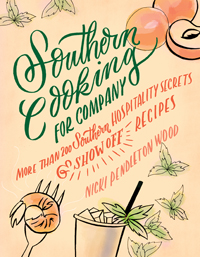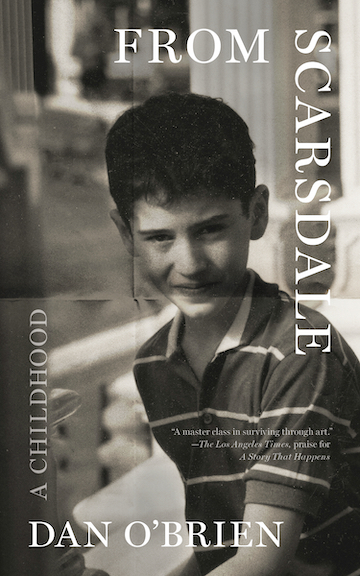Bringing People Together
With Southern Cooking for Company Nicki Pendleton Wood demystifies the dinner party
Nicki Pendleton Wood may be the only combination food writer-mammographer you’ll ever meet—but even if she’s not, she’s unforgettable, always with a wisecrack or a story and Southern in all the best ways. A Nashville native, Wood has been writing about food for decades, often for the Nashville Scene, where she’s reviewed dozens of restaurants. She’s also edited numerous cookbooks, among them Flavors of My World by Nashville newcomer and celebrity chef Maneet Chauhan. Now Wood has brought forth her own book, Southern Cooking for Company, a compendium of Southern recipes collected from home cooks all over the region.
 The book is packed with recipes for every meal, and above each one you’ll find a hospitality tip from the recipe’s contributor. This feature makes Southern Cooking for Company extra-fun to flip through. I happened across the suggestion to dial down the thermostat shortly before guests are expected for an inside gathering, and that tip came in handy just a few days later (as did a nearly effortless recipe for shoepeg-corn dip).
The book is packed with recipes for every meal, and above each one you’ll find a hospitality tip from the recipe’s contributor. This feature makes Southern Cooking for Company extra-fun to flip through. I happened across the suggestion to dial down the thermostat shortly before guests are expected for an inside gathering, and that tip came in handy just a few days later (as did a nearly effortless recipe for shoepeg-corn dip).
While a good number of recipes here are tried-and-true crowd-pleasers or guest-dazzlers, there are also many inventive dishes that sound delicious for a regular old night at home with the fam. It’s a terribly useful cookbook in that way, and it doesn’t feel so precious and gorgeous that you’re loathe to set it down next to the sauté pan. These pages are sure to get nice and dirty—it’s that kind of cookbook.
Wood recently answered questions from Chapter 16 via email about which dishes guests will really remember, some favorite recipes from the book, and what it’s like to work in both journalism and radiology.
Chapter 16: These recipes are gathered from a wide variety of sources. Any dish here that frankly surprised you, in terms of its ease or taste (or some other criteria)?
Nicki Pendleton Wood: Two recipes were so surprising in flavor and innovation. They seem obvious, but no one had thought of them before. Lemon Miso Roasted Sweet Potatoes and Couscous Salad with Fresh Peaches and Sugar Snaps are both simple to make, wildly inventive in their flavor profiles, and utterly delicious. They make a point about the collection, which is that Southern food is alive and evolving. A lot of innovation right now is coming from bloggers—this book is full of bloggers’ recipes.
Chapter 16: What’s the most interesting thing you learned while putting the book together?
Wood: One really striking trend was that so many of the young contributors submitted recipes that were more involved than I expected. I started my food-editor career in the ‘90s, when quick and easy was the prevailing theme, the way “farm-to-table” is now. Everything had to be quick or easy, or both. I figured the next generation of cooks wouldn’t have any idea of how to make biscuits, piecrust, ice cream, or pickles. So the number of multi-step recipes that were submitted was gratifying.
I’m also struck by how much originality is in the recipes. These are not just classic Southern dishes, but new ideas, new techniques. Cooks are innovating like mad in their kitchens. Some of the recipes are twists on familiar favorites, like Hot Black-Eyed Pea and Artichoke Dip, or Bourbon Pecan Cranberry Sauce. Others are real departures that remain solidly Southern, like Crab Cake Mac & Cheese.
Chapter 16: What’s the most important thing you hope people will get from Southern Cooking for Company?
Wood: What I want most is for people to “have company over.” Gather people together any way you can—it’s good for your soul, it’s good for neighborhoods, it’s good for your city. Sociability prolongs your life—it’s true! Bring people together, even if it’s just a couple of friends. Southern Cooking for Company has recipes for every kind of host, whatever the entertaining style. I tend to invite people impulsively, so I gravitate toward a single “wow” dish and a few simpler (or even store-bought) dishes. There’s also plenty here for the person who plans ahead, and for the “project” cook who takes on a big effort for a big reward. The entertaining tips are really useful, too. I learned a lot about running a party smoothly.
Chapter 16: Did you test all these recipes yourself, at home? (And, if so, does your family recognize that they are the luckiest culinary guinea pigs in town?)
Wood: I tested a whole lot of the recipes—by now, my family and friends are accustomed to eating something different every night. But I had a lot of help testing, too—more than 200 recipes is a lot of testing. It was fun to read the testers’ notes. Testing recipes introduced them to dishes that might not otherwise catch their attention.
 Chapter 16: In the years you’ve been writing about food and editing cookbooks, “foodie” has become a word, and the popularity of food writing has grown exponentially. When people ask for advice about how they can break into food writing, what do you tell them?
Chapter 16: In the years you’ve been writing about food and editing cookbooks, “foodie” has become a word, and the popularity of food writing has grown exponentially. When people ask for advice about how they can break into food writing, what do you tell them?
Wood: I’ve had a wonderful career writing about food, and it’s easier now than ever to break in. Just start writing, and if your perspective and ideas resonate, you have a much better chance now to get noticed. Making a living as a food writer—that’s another matter.
Chapter 16: I’ve seen evidence of your own cake-making prowess, and I’m guessing it’s fair to say that a cake is a great way for a cook to show off. Any comment on the role of desserts in cooking for company?
Wood: It’s funny—the French buy dessert, but Southerners make dessert. One contributor said that she always concentrates on dessert because it’s the thing her guests will remember. I love sweets, so I lavish attention on dessert. Honestly, they’ll remember a spectacular cake or homemade ice cream more than the side dishes.
Chapter 16: I’m holding a casual “happy hour” event for my nonprofit organization, and I’m pressed for time but would love to offer a few homemade snacks. Any particular recommendations from the book?
Wood: The pickled shrimp recipe from Belle Chevre proprietor Tasia Malakasis honestly takes maybe ten minutes to put together. And the Lemon Guacamole is ready in ten minutes. There’s a white-bean salad with red bell peppers and hearts of palm that goes together in a few minutes. Spoon it into endive spears. That’s a cocktail party in thirty minutes!
Chapter 16: You’re a career writer who’s also been working as a mammographer for several years. There’s got to be a story there!
Wood: Well, real talk here: I really resent—it actually hurts my feelings—to have my work undervalued. And the Internet monster is all about consuming masses of cheap content. I don’t want to wake up every day feeling like I sold my work cheap. And (more real talk) the advice, “Do what you love and the money will come,” is true only up to a point. We’re all capable of many kinds of work, and I found work I like that feels relevant, and pays. I love radiology and radiography. The science is incredibly interesting, if you’re science-y. The images are astonishing. I never get tired of making them and looking at them. And the patients—I love working with patients. I try to be the most fun mammographer they’ll ever meet.
Chapter 16: What’s next: books or radiation?
Wood: I hope I can keep writing and editing food stories that document a culinary moment. But my heart actually flutters when I pull on the scrubs and step into the hospital clogs. I’m happy in both places. And lucky to be there.

Susannah Felts is a writer, editor, and educator in Nashville, as well as co-founder of The Porch Writers’ Collective, a nonprofit literary center. She is the author of This Will Go Down On Your Permanent Record, a novel, and numerous journal and magazine articles.





